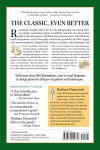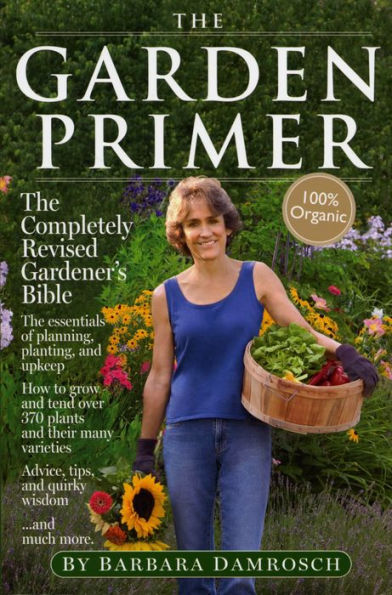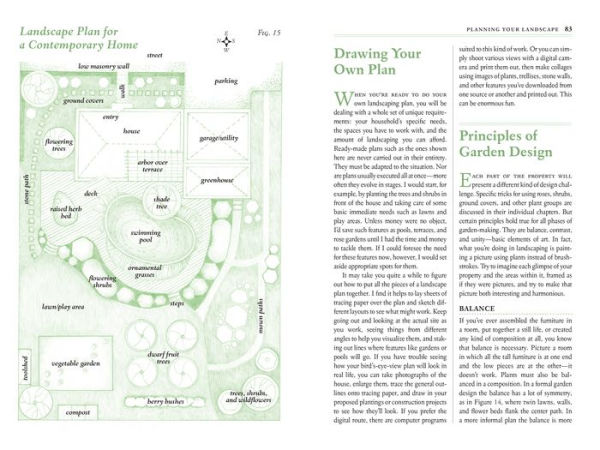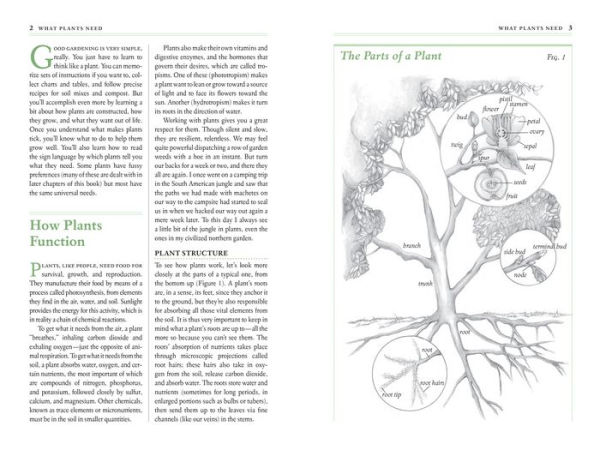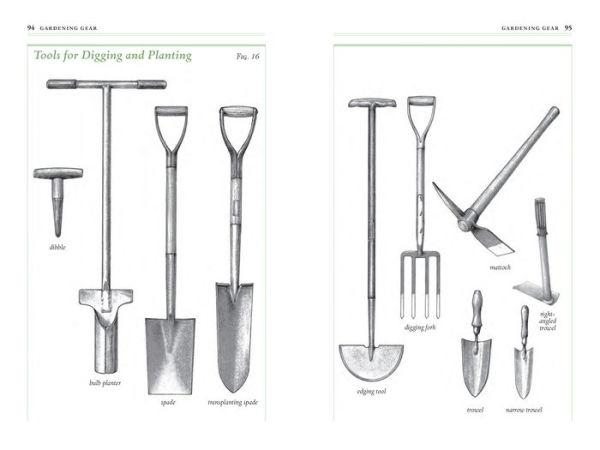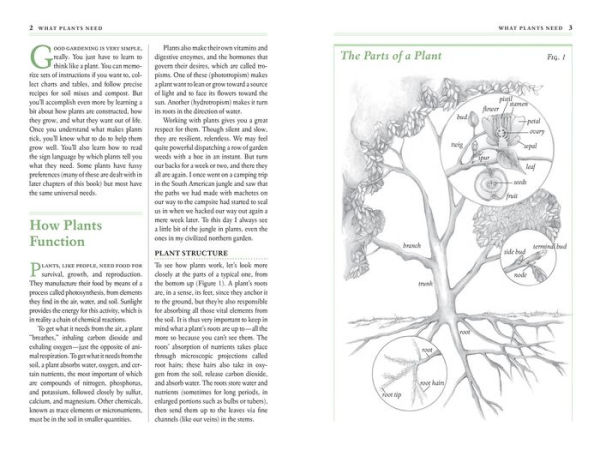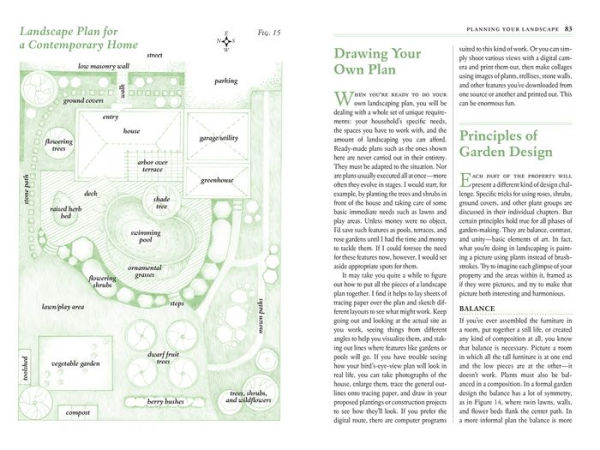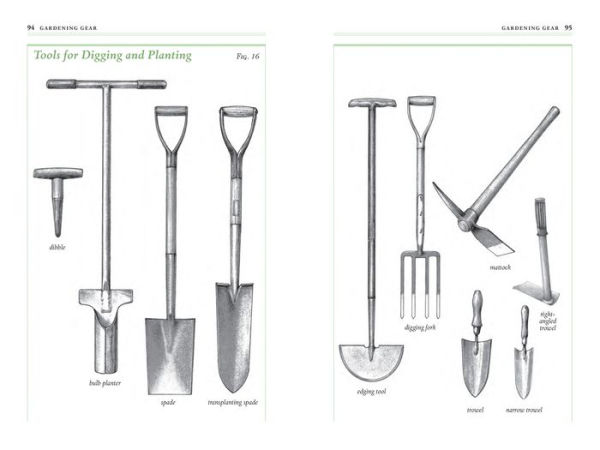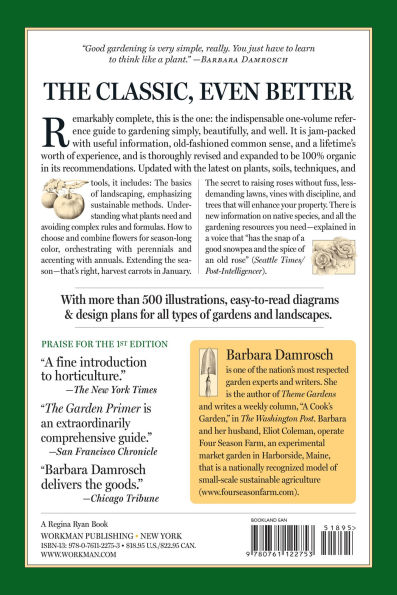The Garden Primer: The Completely Revised Gardener's Bible - 100% Organic
The indispensable one-volume reference guide to gardening simply, beautifully, and well"—now 100% organic.
.
Jam-packed with useful information, old-fashioned common sense, and a lifetime's worth of experience, The Garden Primer is a classic, thoroughly revised and expanded to be 100% organic in its recommendations. Updated with the latest on plants, soils, techniques, and told, it includes: The basics of landscaping, emphasizing sustainable methods. Understanding what plants need and avoiding complex rules and formulas, How to choose and combine flowers for seaon-long color, orchestrating with perennials and accenting with annuals. Extending the season—that's right, harvest carrots in January. The secret to raising roses without fuss, less demanding lawns, vines with discipline, and trees that will enhance your property. There is new information on native species, and all the gardening resources you need—explained in a voice that "has the snap of a snow pea and the spice of an old rose" (Seattle Times/Post-Intelligencer). With more than 370 plant profiles, 500 illustrations, easy to-read diagrams & design plans for all types of gardens and landscapes.
"Barbara Damrosch delivers the goods."—Chicago Tribune
"Best of the crop."—House Beautiful
"Barbara Damrosch's writing has the snap of a good snowpea and the spice of an old rose."—The Seattle Times/Post Intelligencer
"Covers just about everything you could think of and then some." — The Atlanta Journal-Constitution
"An extraordinarily comprehensive guide." — The San Francisco Examiner-Chronicle
"Takes your soaring visions of garden splendor and plants them firmly in the ground."—The Toronto Star
1139397235
.
Jam-packed with useful information, old-fashioned common sense, and a lifetime's worth of experience, The Garden Primer is a classic, thoroughly revised and expanded to be 100% organic in its recommendations. Updated with the latest on plants, soils, techniques, and told, it includes: The basics of landscaping, emphasizing sustainable methods. Understanding what plants need and avoiding complex rules and formulas, How to choose and combine flowers for seaon-long color, orchestrating with perennials and accenting with annuals. Extending the season—that's right, harvest carrots in January. The secret to raising roses without fuss, less demanding lawns, vines with discipline, and trees that will enhance your property. There is new information on native species, and all the gardening resources you need—explained in a voice that "has the snap of a snow pea and the spice of an old rose" (Seattle Times/Post-Intelligencer). With more than 370 plant profiles, 500 illustrations, easy to-read diagrams & design plans for all types of gardens and landscapes.
"Barbara Damrosch delivers the goods."—Chicago Tribune
"Best of the crop."—House Beautiful
"Barbara Damrosch's writing has the snap of a good snowpea and the spice of an old rose."—The Seattle Times/Post Intelligencer
"Covers just about everything you could think of and then some." — The Atlanta Journal-Constitution
"An extraordinarily comprehensive guide." — The San Francisco Examiner-Chronicle
"Takes your soaring visions of garden splendor and plants them firmly in the ground."—The Toronto Star
The Garden Primer: The Completely Revised Gardener's Bible - 100% Organic
The indispensable one-volume reference guide to gardening simply, beautifully, and well"—now 100% organic.
.
Jam-packed with useful information, old-fashioned common sense, and a lifetime's worth of experience, The Garden Primer is a classic, thoroughly revised and expanded to be 100% organic in its recommendations. Updated with the latest on plants, soils, techniques, and told, it includes: The basics of landscaping, emphasizing sustainable methods. Understanding what plants need and avoiding complex rules and formulas, How to choose and combine flowers for seaon-long color, orchestrating with perennials and accenting with annuals. Extending the season—that's right, harvest carrots in January. The secret to raising roses without fuss, less demanding lawns, vines with discipline, and trees that will enhance your property. There is new information on native species, and all the gardening resources you need—explained in a voice that "has the snap of a snow pea and the spice of an old rose" (Seattle Times/Post-Intelligencer). With more than 370 plant profiles, 500 illustrations, easy to-read diagrams & design plans for all types of gardens and landscapes.
"Barbara Damrosch delivers the goods."—Chicago Tribune
"Best of the crop."—House Beautiful
"Barbara Damrosch's writing has the snap of a good snowpea and the spice of an old rose."—The Seattle Times/Post Intelligencer
"Covers just about everything you could think of and then some." — The Atlanta Journal-Constitution
"An extraordinarily comprehensive guide." — The San Francisco Examiner-Chronicle
"Takes your soaring visions of garden splendor and plants them firmly in the ground."—The Toronto Star
.
Jam-packed with useful information, old-fashioned common sense, and a lifetime's worth of experience, The Garden Primer is a classic, thoroughly revised and expanded to be 100% organic in its recommendations. Updated with the latest on plants, soils, techniques, and told, it includes: The basics of landscaping, emphasizing sustainable methods. Understanding what plants need and avoiding complex rules and formulas, How to choose and combine flowers for seaon-long color, orchestrating with perennials and accenting with annuals. Extending the season—that's right, harvest carrots in January. The secret to raising roses without fuss, less demanding lawns, vines with discipline, and trees that will enhance your property. There is new information on native species, and all the gardening resources you need—explained in a voice that "has the snap of a snow pea and the spice of an old rose" (Seattle Times/Post-Intelligencer). With more than 370 plant profiles, 500 illustrations, easy to-read diagrams & design plans for all types of gardens and landscapes.
"Barbara Damrosch delivers the goods."—Chicago Tribune
"Best of the crop."—House Beautiful
"Barbara Damrosch's writing has the snap of a good snowpea and the spice of an old rose."—The Seattle Times/Post Intelligencer
"Covers just about everything you could think of and then some." — The Atlanta Journal-Constitution
"An extraordinarily comprehensive guide." — The San Francisco Examiner-Chronicle
"Takes your soaring visions of garden splendor and plants them firmly in the ground."—The Toronto Star
27.5
In Stock
5
1

The Garden Primer: The Completely Revised Gardener's Bible - 100% Organic
820
The Garden Primer: The Completely Revised Gardener's Bible - 100% Organic
820Paperback(Second Edition,Revised,2nd)
$27.50
27.5
In Stock

Product Details
| ISBN-13: | 9780761122753 |
|---|---|
| Publisher: | Workman Publishing Company |
| Publication date: | 02/28/2008 |
| Edition description: | Second Edition,Revised,2nd |
| Pages: | 820 |
| Product dimensions: | 6.00(w) x 8.90(h) x 1.80(d) |
About the Author
From the B&N Reads Blog







